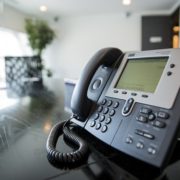Etiquette Basics for Business Emails
Five years ago, analysts with technology research firm, The Radicati Group, Inc. predicted more than 130 billion business emails would be sent and received each day by the end of last year. Current figures indicate we’ve met those expectations in full force. This form of communication has not only inundated the business world but transformed it. In light of this development, understanding proper business email etiquette is the key to conveying professionalism and authority in today’s online landscape.
Building a Winning Email Strategy
Email has certainly become the norm these days, leaving some a bit lax on the finer points of the game. As a result, many formal emails fall short of delivering on their intended purposes. To carry a professional image, business etiquette dictates certain elements should be included.
- Straightforward Subject Line: Subject lines are our first, and possibly our only, opportunities to grab recipients’ attention and convince them reading further is worth their time. These shouldn’t, under any circumstances, be left blank. Of course, a vague generic description, like “read this now” reeks of spam and could be equally ineffective. Be direct and concise regarding the email’s contents, such as “End-of-Year Marketing Report Attached”. Specificity greatly increases the chances of an email being opened and read through.
- Appropriate Salutation: Salutations are also crucial components of business etiquette. Openings like “Dear”, “Good Day”, “Greetings”, “Hello” and “Hi” all serve nicely in a professional environment. These should be followed by the recipient’s name. While “To Whom It May Concern” and “Dear Sir or Madame” once ruled the world of formal salutations, they’re both considered somewhat off-putting in the modern-day sense.
Full Signature: Be sure to add your signature to business emails as well. Though these shouldn’t drone on beyond five or six lines, they should definitely contain your name, email, company designation and phone number. All these give recipients ample ways of contacting you directly in the email, so they don’t have to spend extra time looking up your information elsewhere.
- Be Thorough: Regardless of how many past exchanges you’ve had with a recipient, it’s important to provide details. Compose each email as if it were the first communication between the two of you, briefly but fully covering the subject at hand. This helps avoid confusion and prevents recipients from having to scroll through previous conversations to remind themselves of what you’re talking about.
- Follow the Rules of Writing: Though the world has become fairly lenient when it comes to the ins and outs of written communication, business email etiquette places great emphasis on them. Write in complete sentences with proper punctuation and capitalization in all the right places; otherwise, you’ll appear sloppy or even uneducated in the eyes of others.
After all is said and done, be sure to proofread before sending. Walk away for a few minutes and come back to it, so you’ll read what you wrote rather than what you meant to say. With all these elements in place and careful attention to detail, you’ll build a well-crafted formal email strategy sure to draw the attention of coworkers, clients and prospects.
What to Avoid in Business Emails
Just as certain components should be part of your winning email approach, some things should be left out of the mix. Allowing anger or frustration to sway your good judgement could be considered the most vital point on this end of the spectrum. Other factors to sidestep include:
- Sharing Private Info on Group Emails: This may seem like common sense, but it’s easy to forget who and what are involved in a hasty moment. Never share private contact information or files in group chats unless you have explicit permission. Doing so compromises security and trust, and it could get you into quite a bit of legal trouble if the breached individual decides to take the situation that far.
-
Humour is suitable for the working atmosphere, but not in a professional email.
Using Humor: Humor is a wonderful gift when used in face-to-face exchanges, but it tends to lose something in digital translation. Statements that might be hilarious in person could be taken as outright offensive via email, so just don’t make the attempt. It’s better to come off bland than boorish.
- Inserting Informal Features: Casual acronyms certainly have their places, and emoticons are capable of brightening people’s days, but there’s no room for them in business emails. Smiley faces, LOLs, excessive exclamation points and other non-essentials tend to detract from professionalism, so leave them out of the mix.
Last but not least, don’t leave an email sitting in your inbox unless it’s the definitive end of a conversation. If a recipient took the time to read an email from you and respond to it, return the courtesy.
Professionalism is vital when it comes to online correspondence where facial expressions, vocal indications and other communication tools don’t apply. Follow these rules of email etiquette, and you’ll be all set to impress. Attention to detail takes a little extra time and effort, but it pays off in the grand scheme of things.


 Full Signature: Be sure to add your signature to business emails as well. Though these shouldn’t drone on beyond five or six lines, they should definitely contain your name, email, company designation and phone number. All these give recipients ample ways of contacting you directly in the email, so they don’t have to spend extra time looking up your information elsewhere.
Full Signature: Be sure to add your signature to business emails as well. Though these shouldn’t drone on beyond five or six lines, they should definitely contain your name, email, company designation and phone number. All these give recipients ample ways of contacting you directly in the email, so they don’t have to spend extra time looking up your information elsewhere.







